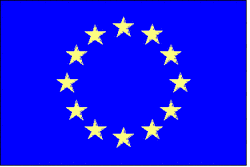Sat, Jul 19, 2003
On The Record Regarding Part 66 And Part M
 The Aircraft Electronics
Association (AEA) has sent official comments to the European
Aviation Safety Agency (EASA) on Implementing Rules (IRs) for Part
66 and Part M. Previously, AEA sent comments on EASA IR 145. AEA
represents nearly 100 European aviation businesses.
The Aircraft Electronics
Association (AEA) has sent official comments to the European
Aviation Safety Agency (EASA) on Implementing Rules (IRs) for Part
66 and Part M. Previously, AEA sent comments on EASA IR 145. AEA
represents nearly 100 European aviation businesses.
Part 66
AEA does not support the proposed expansion of Part 66 to
aircraft below 5700 kg. The proposed licensing does not
conform to the progressive career paths of aviation/avionics
maintenance technicians, the proposal is cost prohibitive, the
current licensing and oversight of technicians of light aircraft
does not support an expedited implementation of a transitional
regulations. In addition, this proposal is cost prohibitive
to the individual technicians and the small businesses that employ
them.
The proposed regulation is also discriminatory in that it favors
businesses located in countries that have state funded/state
supported technical training schools while placing a significant
financial burden on companies located in countries without state
funded technical training programs.
Part M
 AEA also does not support the
proposed expansion of Part M to aircraft below 5700 kg, saying the
requirement to individually approve each and every aircraft's
maintenance program is administratively burdensome to individual
National Aviation Authorities; extremely costly to individual
owners/operators; and will introduce a lack of standardization
essential to the improving safety of general aviation maintenance
and operations.
AEA also does not support the
proposed expansion of Part M to aircraft below 5700 kg, saying the
requirement to individually approve each and every aircraft's
maintenance program is administratively burdensome to individual
National Aviation Authorities; extremely costly to individual
owners/operators; and will introduce a lack of standardization
essential to the improving safety of general aviation maintenance
and operations.
Furthermore, the proposed regulation will discourage growth in
the ownership of general aviation aircraft. The proposal will
channel limited financial resources away from safety enhancing
cockpit technology in order to develop maintenance work cards and
maintenance management plans. The administrative burden
imposed by this proposal is not based on quantitative or
qualitative analysis of any known problems but rather an arbitrary
expansion of JAR-OPS criteria intended for commercial aircraft
operations.
More News
Airport Marking Aids Markings used on runway and taxiway surfaces to identify a specific runway, a runway threshold, a centerline, a hold line, etc. A runway should be marked in ac>[...]
"It is extremely difficult, if not impossible, for manned aircraft to see a drone while conducting crop-enhancing and other aerial applications at low altitudes and high speeds. We>[...]
Aero Linx: The Skyhawk Association The Skyhawk Association is a non-profit organization founded by former Skyhawk Pilots which is open to anyone with an affinity for the A-4 Skyhaw>[...]
“The T-54A benefits from an active Beechcraft King Air assembly line in Wichita, Kansas, where all required METS avionics and interior modifications are installed on the line>[...]
Aero Linx: Aerostar Owners Association The Association offers the Aerostar Owner a unique opportunity to tap an invaluable source of information concerning the care and feeding of >[...]
 ANN's Daily Aero-Term (04.28.24): Airport Marking Aids
ANN's Daily Aero-Term (04.28.24): Airport Marking Aids Aero-News: Quote of the Day (04.28.24)
Aero-News: Quote of the Day (04.28.24) ANN's Daily Aero-Linx (04.28.24)
ANN's Daily Aero-Linx (04.28.24) Aero-News: Quote of the Day (04.29.24)
Aero-News: Quote of the Day (04.29.24) ANN's Daily Aero-Linx (04.29.24)
ANN's Daily Aero-Linx (04.29.24)




